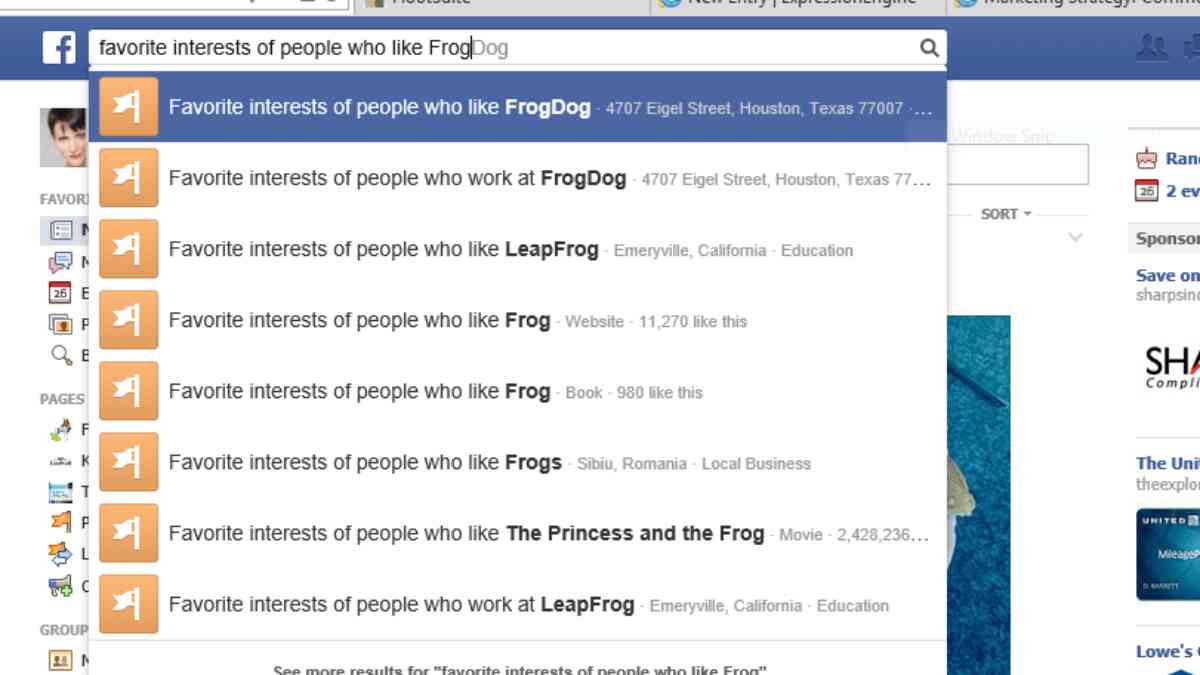
What is Graph Search?
How can Facebook's Graph Search help your business?
In August 2013, Facebook launched Graph Search to all U.S. users.
When you use Graph Search, Facebook searches all its data to display results about anything: Users, pages, photos, videos, companies, places, and, soon, status updates. You can Graph Search for friends who live near you—and you can search for friends who live near you who are married and “like” FrogDog.
Yep, it’s that granular.
Find Us on Graph Search
Want your company to pop up on Graph Search? Make your company Facebook page as detailed as possible.
Which means you need to fill out the page entirely. Sure, you may have the normal information covered, like the name of your business, Web site URL, physical address, hours, and contact information. Yet you may not have completed the category, subcategory, and description sections (long and short). Tsk tsk.
The category and description fields help make you visible to your target audiences. What you put in these boxes helps your Facebook page pop up when people search for specific types of businesses. If your business is local and in Houston, for example, you want to ensure you’ve selected “local business.” Doing so helps users located in Houston who search for local businesses find you in their search results.
The short and long descriptions help you describe your business with key words that your target audiences might search. Also, descriptions help people who visit your page understand whether you’re the type of business they seek.
Short descriptions are 155 characters or fewer; long descriptions can go on for paragraphs.
Use Graph Search to Tailor Content
Facebook success is posting content that your target audience finds interesting and relevant. As a rule of thumb, 80 percent of your content should provide valuable information for your target audience and 20 percent should be directly promotional.
So how do you determine what your audience values?
Graph Search to the rescue. Graph Search makes it easy to determine your audience’s preferences. For example, try searching for “favorite interests of fans of FrogDog.” This provides a list of pages that are liked by people who like the FrogDog Facebook page. Nifty—and immensely helpful.
Updated: Oct 10, 2019

We do not spam. And you can unsubscribe when you want.